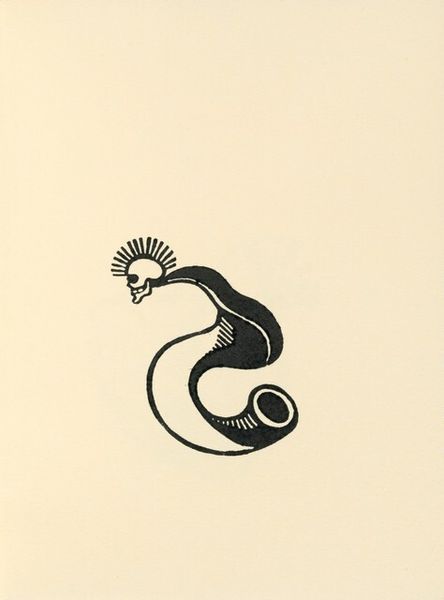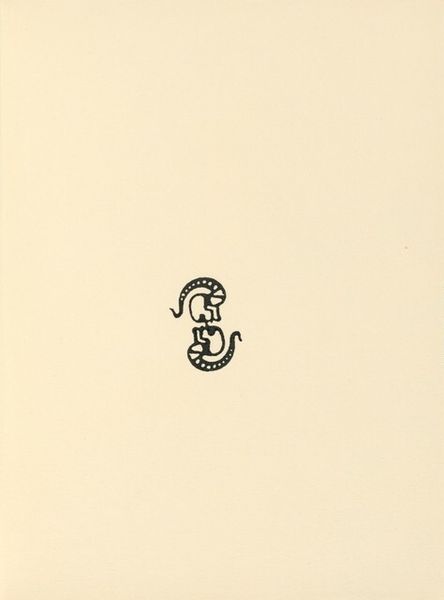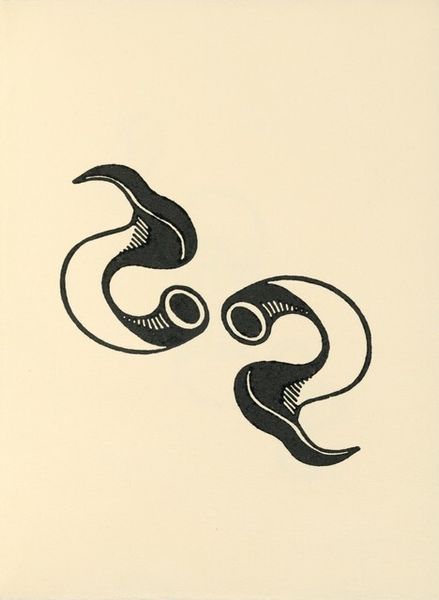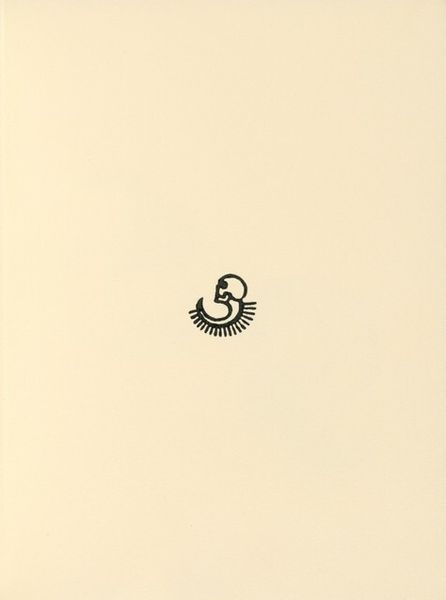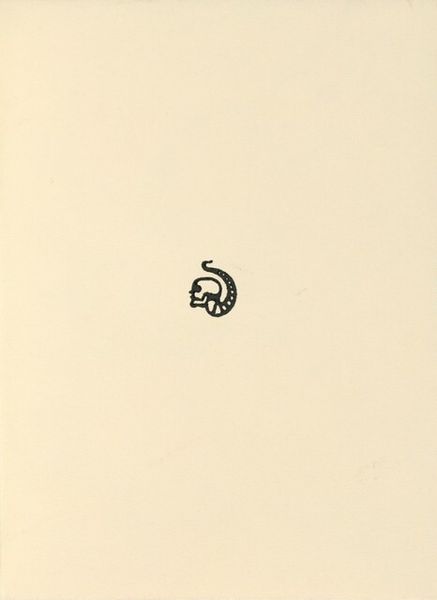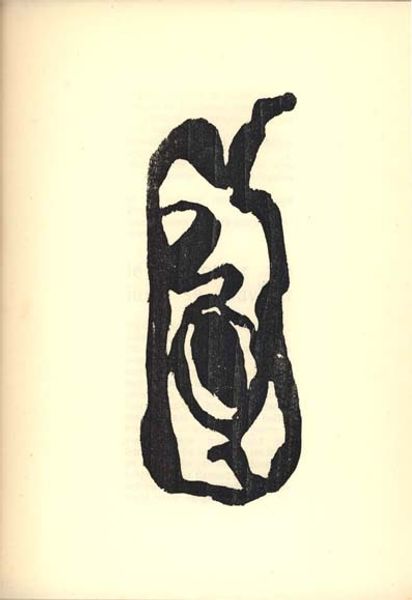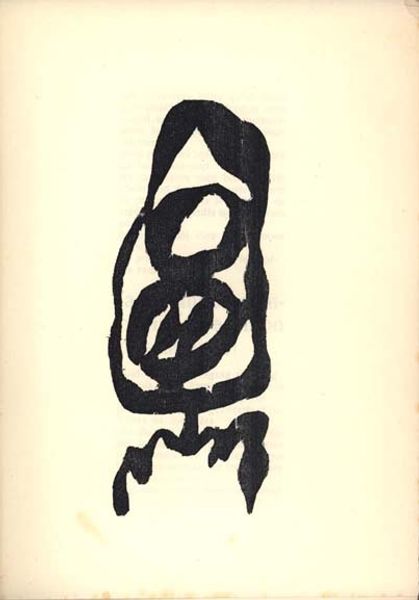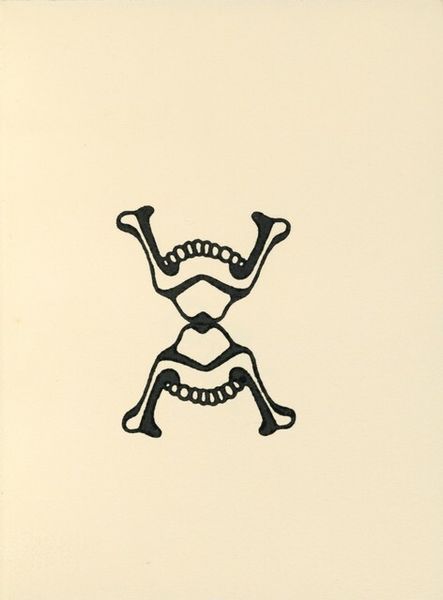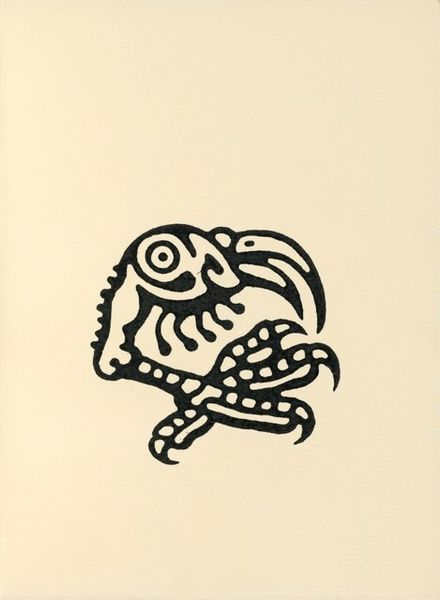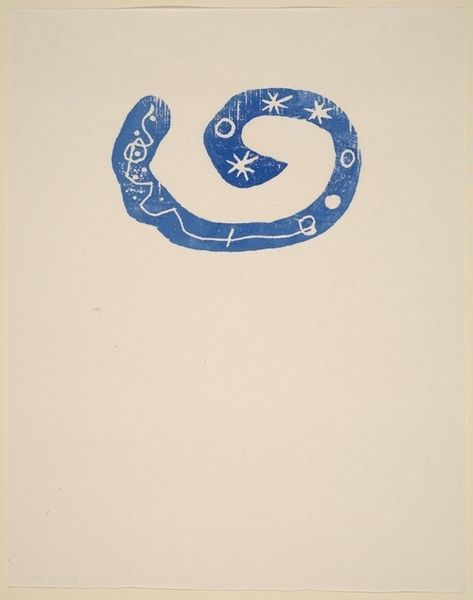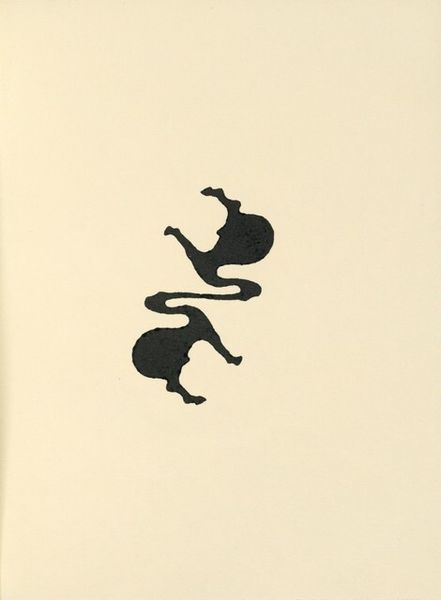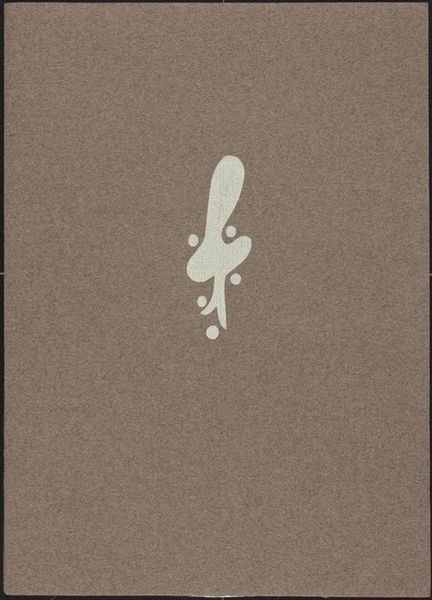![Untitled ["tattoo" book] by James McCracken Jr.](/_next/image?url=https%3A%2F%2Fd2w8kbdekdi1gv.cloudfront.net%2FeyJidWNrZXQiOiAiYXJ0ZXJhLWltYWdlcy1idWNrZXQiLCAia2V5IjogImFydHdvcmtzLzg3MTA0MjJlLTY5N2YtNDg0MC1iNGIzLTljNzU4N2E5ZjhhZi84NzEwNDIyZS02OTdmLTQ4NDAtYjRiMy05Yzc1ODdhOWY4YWZfZnVsbC5qcGciLCAiZWRpdHMiOiB7InJlc2l6ZSI6IHsid2lkdGgiOiAxOTIwLCAiaGVpZ2h0IjogMTkyMCwgImZpdCI6ICJpbnNpZGUifX19&w=1080&q=75)
drawing, ink
#
drawing
#
figuration
#
ink
#
line
#
monochrome
Dimensions: overall (closed): 17.1 × 13 × 1.5 cm (6 3/4 × 5 1/8 × 9/16 in.) sheet (each approx.): 16.4 × 12.6 cm (6 7/16 × 4 15/16 in.)
Copyright: National Gallery of Art: CC0 1.0
Curator: This stark, untitled drawing rendered in ink is part of what's called the "Tattoo Book" by James McCracken Jr., created in 1971. What strikes you about it initially? Editor: The drawing’s placement creates a deep sense of isolation, almost existential. That bold, black shape set against the off-white paper... It’s heavy, weighty. It's a feeling that maybe speaks to the turmoil surrounding reproductive rights even then. Curator: It is a monochromatic drawing consisting only of line. McCracken uses shape economy to deliver clear representational forms. Specifically, notice the contours, as the outside shape is somewhat human. How might this drawing function as a potential tattoo? Editor: Tattooing itself has been deeply intertwined with marginalized communities—sailors, convicts, sex workers—a way to reclaim their bodies, express solidarity, or protest against oppressive forces. This figuration is introspective, almost burdened, even though its design makes it wearable as a kind of symbol, even armor. It could be read as a defiant emblem of self-ownership. Curator: You propose it as a possible armor for some. What about the design supports or hinders this view? It could be understood formally that it reads as complete, enclosed, final, which opposes freedom. Editor: Precisely. It is self-contained and complete. Perhaps that feeling of being ‘final’ or trapped comes across more so in hindsight, given the continuous challenges to personal autonomy that continue today. Curator: Indeed. What seems simple at first glance continues to speak, even decades after its creation, highlighting the tensions of that specific historical moment. Thank you for highlighting its complexity, Editor. Editor: And thank you, Curator, for highlighting McCracken's fascinating capacity for simple shape, that speaks with heavy content.
Comments
No comments
Be the first to comment and join the conversation on the ultimate creative platform.
